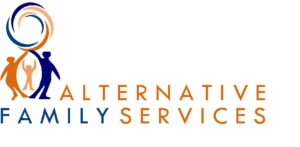How Foster Care Works From Start To Finish
Here is an overview of how the foster care process works here in California, highlighting the main steps of foster care from removal to reunification, adoption, long-term care or emancipation.
When Is a Child Removed From Their Home?
- An allegation of abuse or neglect is reported, or police respond to a call that results in Child Protective Services (CPS) being called. Sometimes, numerous calls are made prior to CPS involvement.
- When a primary caretaker is no longer able to take care of a child – for example, if a parent is incarcerated or hospitalized for behavioral health reasons.
Who Investigates Abuse and Neglect Allegations?
County Child Protective Services (CPS) and sometimes the Community Care Licensing (CCL) Division of the California Department of Social Services conduct investigations into abuse and neglect. Foster Family Agencies (FFAs) work collaboratively with these organizations the entire time a youth is placed in care to establish the best individual case plan for the client and their family.
What Happens After a Child is First Removed From Their Home?
- At this stage, AFS works with the County to find the best possible home for the children or teens.
- Ideally youth are placed into a home-based setting.
- In San Francisco they may be placed in our Emergency Shelter program.
- A child or teen may stay for a limited time at a shelter home or a county facility.
How Child Intake Works at AFS
After a child or teen has been removed from their home and is awaiting placement, a County caseworker calls an AFS Intake Coordinator to see if we have a qualified home.
Simultaneously, the county starts a concurrent placement search within the county or at other FFAs in case AFS does not have an appropriate placement. This includes doing a relative/kinship search.
What AFS Intake Coordinators Do
The AFS Intake Coordinator matches a foster youth with certified resource parents who best meets the needs of the whole child including: proximity to the child’s original school and community, special needs accommodations, compatible cultural and religious beliefs and appropriate level of training based on the client’s needs.
Once a resource family is identified, the Intake Coordinator calls the County Placement worker to offer the homes or sometimes homes for placement. An additional family evaluation is conducted by some counties prior to placement.
Often, AFS receives very little information about the youth being placed in care, especially if this is a first-time removal. The time it takes a county to determine if the child or teen will be placed varies based on the investigation into abuse and neglect. It may take hours or days to place a youth with resource parents.
AFS Finds a Placement – What Happens Next?
- Once the county decides on an appropriate placement, arrangements are made for the youth to be transported to the home. If a county worker transports a placement, an AFS caseworker meets the youth at the home to help settle them in and complete the placement paperwork. AFS typically ensures everything is in place with the fostering family – crib, car seats, beds, etc.
- An AFS caseworker is assigned to the client and family at time of placement. The caseworker is expected to visit the resource home within 24 hours of placement (weekends excluded).
- A Child and Family Team (CFT) is formed with representatives from AFS and the placing county. Together, they form a case plan with the ultimate goal of permanency.
How Does Reunification Work?
- When possible, the goal is to reunify foster youth with their biological families.
- While youth are in AFS care, staff provides biological parents with various levels of care including therapy, life skills, job and housing support and addiction resources. AFS strives to heal and stabilize the parents to prepare them to reunify with their child or teen.
- Once reunification is approved, a county worker typically picks up the youth and facilitates the reunification.
What If a Child Can’t Be Reunited With Biological Family?
- Permanency is our main goal. If reunifying with biological parents is not an option, AFS helps identify potential relatives who may be able to care for the child or teen.
- When kinship placement is not available, AFS assess resource parents to determine if it’s possible for the client to be adopted.
- When adoption is not viable, AFS finds a long-term supportive resource home for placement and supports the youth in preparing for emancipation.
Learn More About Foster Care
For more information about how foster care works in California, check out these resources:
- https://www.cdss.ca.gov/inforesources/foster-care
- https://www.afs4kids.org/become-foster-parent/
- https://www.afs4kids.org/services/
